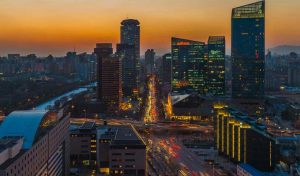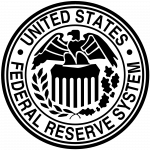Question: How vulnerable is the global economy to a synchronised slowdown from both US and China? How does the rest of Asia, including Singapore, weather and navigate this environment? What type of policies must countries pursue to build resilience?
Global growth is on a gentle slide down, but is not heading for a hard landing.
- We have had two years of robust growth, in many parts of the world above trend.
- It is to be expected that global growth will moderate this year towards a more sustainable rate, and this moderation has already started.
- We expect global GDP to grow by 3.5% this year, only slightly slower than the 3.7% estimated for 2018, and higher than the average of 3.4% in the three years to 2016.
The US economy remains in good shape.
- The US is projected to grow by 2.4% in 2019, still above potential.
- The effects of the fiscal stimulus are not expected to fade until later this year.
- Employment growth remains healthy, and this will sustain household spending.
- Private investment is a question mark: the recent increase in political and policy uncertainty is a dampener, but ongoing deregulation will support increased capital outlays in some sectors.
China’s economy is moderating but is likely to stabilise at a more sustainable pace.
- China is facing three economic headwinds:
- the lagged effects of the drive to deleverage the economy;
- the maturing of the global manufacturing cycle; and
- the effects of the US trade tariffs – both the direct impact on production and the indirect effect on consumer and investor sentiment.
- But accommodative macroeconomic policies will help to avoid a sharp growth deceleration.
- Monetary policy has been loosened and we are already witnessing signs of a revival in credit creation.
- Fiscal policy is also providing support, boosted by infrastructure spending.
- China’s economy is expected to grow by 6.2% in 2019, down from 6.6% last year. The growth moderation is not trivial but nor is it alarming.
What is worrying about 2019 is not headline growth rates.
What is worrying is that downside risks have increased and policy buffers are limited in the advanced economies.
First, downside risks. Global economic policy uncertainty is probably at its highest since the Asian financial crisis 20 years ago.
- Trade tensions are an obvious source of uncertainty.
- Trade negotiations between the US and China have yet to produce an agreement.
- Recent signals are encouraging but the risk remains of a breakdown in talks and a further escalation of tariffs.
- This could in turn have knock-on effects on supply chains across Asia.
- And trade risks are not limited to US-China.
- US tariffs on automobile imports from the EU remains a distinct possibility. Automobiles are a significant chunk of global trade and supply chains.
- Europe is another source of potential risk.
- The key risk event is Brexit. There are few indications that an agreement between the UK and the EU can be reached before the 29 Mar separation deadline.
- Italy also bears watching. The economy is in recession. This is happening against the backdrop of continued high government debt and a banking system that has still not healed from the last crisis.
Second, limited policy buffers. Growth is moderating in the advanced economies with little policy space for stimulation.
- In Europe, the growth cycle is turning down while interest rates are still negative. The need for consolidation in public finances means limited scope for fiscal expansion.
- The US has more monetary policy buffer, but not much more. The fiscal bullet has already been fired.
- If the baseline growth forecasts that I mentioned earlier pan out, the limited policy buffers are less relevant. But if there is a sharper slowdown, there are few safety nets.

What does all this mean for Asia? Growth in Emerging Asia is expected to remain stable.
- On the downside, exports have moderated in line with the maturing of the global economic and IT cycles.
- On the positive side, domestic demand remains resilient, labour markets are buoyant, and the decline in oil prices should give a boost to economic activity.
- Financial conditions have loosened this year, as capital inflows resumed after significant outflows in 2018.
Apart from the fallout from the trade conflict between the US and China, the key risk in Emerging Asia is leverage.
- Leverage ratios have risen sharply in a number of countries in Asia – corporate leverage in some countries, household leverage in others.
- Excessive leverage can be a source of financial instability, particularly if global growth were to slow down significantly or interest rates to rise sharply.
- Policymakers have to strike a balance to ensure that measures to support growth do not add to financial excesses in the economy.
But Asia has strong buffers and is today more resilient to external shocks, compared to 10 or 20 years ago.
- Most countries in Emerging Asia:
- are running current account surpluses;
- have healthy FX reserves relative to imports and short-term external debts;
- have more flexible exchange rates; and
- strengthened macroprudential policy frameworks to cope with volatile capital flows.
As with the global economy, the Singapore economy is also moderating towards a more sustainable pace.
- The economy did well last year, growing by 3.2%.
- This year, external demand will be softer, reflecting slower global GDP growth and the maturing of the global tech cycle.
- Manufacturing and trade-related sectors will feel most of the external drag.
- Financial services is likely to continue to outpace the overall economy on the back of ongoing digital transformation. But growth will be slower than last year, reflecting weaker credit demand, especially from the region.
The official forecast is for GDP growth to be in the 1.5-3.5% range this year.
- Growth is likely to come in close to the mid-point of that range, maybe a touch lower.
- This is not a bad outcome. It will bring the level of GDP closer to its potential. There is no need to stimulate the economy.
If there is a sharper slowdown, Singapore’s healthy macroeconomic position gives it the resilience to absorb the shock. It also has the policy space to respond to mitigate the impact.
Question: Can ASEAN be a net beneficiary of the US-China trade tensions through production diversion/substitution effects, or is the income effect too large versus substitution effects?
The short answer is that it is too early to tell if ASEAN will be a net beneficiary of US-China trade tensions. The immediate impact is clearly negative: there are no winners.
There are two ways through which ASEAN countries could benefit from the US-China trade tensions: trade diversion in the short term and supply chain reconfiguration in the medium term.
- Trade diversion happens when the US and China import more from ASEAN and cut back on imports from each other as a result of the tariffs.
- Supply chain configuration happens when production networks shift away from China to ASEAN countries.
There appears to be some trade diversion to countries in Asia as a result of the US-China tariffs but this is not large and may not be sustained.
- Korea and Taiwan seem to have benefited as alternative suppliers of the intermediate and capital goods targeted by the US tariffs.
- Malaysia, Philippines, and Vietnam, also seem to have benefitted from trade diversion as shown by their relatively strong export growth to the US in tariff-hit products.
- But already these effects seem to be tapering off.
As for supply chain reconfiguration, one hears anecdotal stories of such shifts but nothing has been picked up in the data.
- A recent survey by AmCham China and AmCham Shanghai reported that almost one-fifth of the companies that responded had relocated or were considering to move China-based manufacturing facilities to Southeast Asia.
- It remains to be seen whether these plans are followed through. Few countries can match the scale that China provides.
- And so far, there has been no decisive pick-up in FDI flows into the ASEAN countries.
- This is not surprising. Shifting production facilities is costly and will not be undertaken lightly in response to short-term factors. It also takes time to shift these facilities.
- Most businesses are likely to take a wait-and-see attitude given that the US-China trade negotiations are ongoing.
If the negotiations break down and the tariffs turn out to be permanent, the impetus for firms to relocate their production bases to countries outside China would be stronger.
- In such a scenario, the US tariffs will expedite a process that has already begun as a result of rising labour costs in China vis-à-vis other regional economies.
- Some ASEAN countries may stand to gain as manufacturers seek alternative cheaper locations outside of China, and circumvent the tariffs at the same time.
- Which countries gain from this depends on who has comparative advantage in producing the affected goods and who can provide a favourable investment climate.
But the immediate impact is clear: ASEAN countries will be negatively impacted by the US-China trade conflict.
- The heightened uncertainty over trade is already beginning to erode business sentiment and dampen investment across the region.
- And to the extent that growth in China slows down as a result of the tariffs, it is likely to have a larger negative “income” effect on ASEAN than any positive substitution effect from trade diversion or supply chain reconfiguration.
- China is the largest, if not one of the largest, trading partner to every country in ASEAN. A slowdown in China will have a significant impact on growth in ASEAN.
In short, tariffs are a net negative to a region that has depended on open and free trade for its prosperity.
Question: Expectations about global central bank policies have been shifted towards a more dovish bias, notably Fed statements last month, and in the region, Reserve Bank of Australia shifting from a tightening to a neutral bias and Reserve Bank of India’s surprise rate cut. Given the uncertainties over global growth and benign inflation trends, do you see more central banks in the region following suit, including Singapore?

Central banks’ recent actions and pronouncements have been consistent with the state of their economies.
- Economic growth has peaked and is moderating. Inflation has edged up but remains benign. At the same time, downside risks to growth have increased.
- There is room to take a pause and watch how the data pans out.
- In short, central banks ranging from the US Fed to the ECB to the Bank of England are exercising more patience and flexibility.
The Fed’s decision to adopt a “wait-and-see approach regarding future policy changes” is of course the most significant expression of this new mood.

- It has helped to allay investor anxiety over the future pace of rate hikes and its impact on growth in both the US and global economies.
- It has also resulted in a significant easing of financial conditions globally, and helped lift sentiments in the near term.
- The impact on the real economy-in particular, investment-is expected to be modest.
- Ultra-easy monetary policy in the past decade has had limited effect on capital spending, which continues to be driven by real factors such as policy certainty, demographics, and productivity growth.
- I believe the Fed remains alert to risks on both sides: a sharper than expected slowdown in growth as well as an unexpected pick-up in inflation.
- And that it will be prepared to move in either direction.
The easing of global financial conditions arising from the Fed’s pause will provide Asia with some relief and policy space.
- Heightened volatility in capital flows and exchanges rates last year had led to a tightening of financial conditions across Asia.
- The pressures on the current account and exchange rates have receded following prompt measures by Asian countries to hike interest rates and moderate import-intensive fiscal spending.
- Now, the pause in US monetary policy tightening has eased global financial conditions and given Asian central banks more room to calibrate monetary policy to domestic inflation and growth considerations.
Still, central banks have to assess the balance of risks carefully. A premature loosening of monetary policy could risk undoing recent gains in restoring currency stability.
As for Singapore, monetary policy remains unchanged; the current settings for the trade-weighted exchange rate remain appropriate. What we will do in Apr is another matter, depending on the growth and inflation outlook then.
- As I said earlier, we expect GDP growth this year to come in close to the mid-point of the official forecast range of 1.5-3.5% per cent.
- This moderation in growth from last year will bring the economy closer to its potential path.
- Inflation continues to behave according to our expectations. MAS Core Inflation came in at 1.7% y-o-y last month.
- This is within MAS’ forecast range of 1.5 to 2.5 per cent for the full year, which was announced in the October 2018 Monetary Policy Statement.
The impact of the recently announced Budget does not change the outlook for growth or for inflation.
- Although the government expects to run a deficit in this Budget, the fiscal impulse – which measures the impact of actual spending that flows through the economy in a given year – will be neutral in FY2019.
- The measures announced in the Budget are expected to have a muted effect on core inflation this year and the next.
Question: The outlook for the Fed’s balance sheets has changed. Where do you see financial vulnerabilities brewing in the world, as we advance towards quantitative tightening?
There are two things worth keeping in mind with respect to the Fed’s balance sheet run-off.
First, the Fed has moved away from its previous guidance that the run-off will be on “autopilot.”
- The Fed has signalled that the balance sheet run-off will end sooner than earlier anticipated.
- It has also said it is prepared to alter the size and composition of its balance sheet if future economic conditions warrant such a move.
- This suggests that the withdrawal of central bank liquidity could be less than earlier envisaged.
Second, the Fed has not changed its policy of running down its balance sheet at a rate of up to US$50 billion a month.

- This means that the path for liquidity conditions remains on a tightening trajectory and long-term interest rates could back up higher.
- The notes of caution that central banks, regulators, and analysts have been sounding about the need for entities to manage down their leverage remain valid.
I believe systemic financial risk is contained – in the US as well as major financial markets.
- Leverage in the financial industry has come down significantly compared to before the global financial crisis.
- Capital and liquidity buffers in key financial institutions are stronger, thanks to the post-crisis regulatory reforms.
But pockets of financial vulnerability exist in many parts of world.
- They bear close watching as liquidity conditions gradually tighten.
The root cause of these vulnerabilities is leverage.
- The world as a whole is more indebted today than it was prior to the global financial crisis.
In the US, non-financial corporate debt has risen sharply, spurred by years of very low interest rates.
- The underwriting of some of this debt has been quite weak.
- f the business environment turns for the worse and cash flows dry up, corporate debt defaults could snowball.
- This is not likely to be a systemic problem, but it could create disruptions.
Leverage ratios have also risen sharply in several Asian economies – corporate leverage in some, household leverage in others.
- Corporate earnings have not gone up in tandem with the rise in leverage, signalling weaker repayment ability under interest rate stress.
- Households, which have taken on more leverage on the back of low interest rates, might be more vulnerable to shocks in housing prices.
- If economic growth were to slow down significantly or interest rates rise sharply, these high levels of leverage could set off financial stresses – again, not of a systemic nature but troublesome nonetheless.












